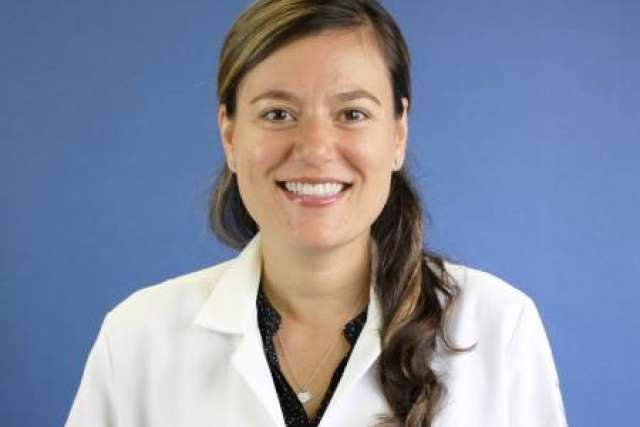Photo: With proper interventions, the risk of prediabetes developing into type 2 diabetes can be greatly reduced.
More than 96 million Americans have prediabetes — and most of them don’t know it.
Prediabetes refers to blood-sugar levels that are higher than normal, but not high enough to be considered type 2 diabetes.
There are generally no symptoms associated with prediabetes, which is why the diagnosis can come as such a surprise. Elevated blood-sugar levels are typically identified through blood tests performed during an annual physical.
Prediabetes doesn’t have to be a prognosis of impending type 2 diabetes, since studies have shown that not everyone with prediabetes will go on to develop type 2 diabetes. Rather, it’s a sign to take action to lower blood sugar through healthy lifestyle changes, says Tannaz Moin, MD, a UCLA endocrinologist whose research and clinical practice focus on treating prediabetes and diabetes.
“The bad news is that prediabetes is a very prevalent condition that affects a lot of U.S. adults,” Dr. Moin says. “But the good news is that, unlike a lot of conditions, with prediabetes we have really robust evidence and we know what interventions can help lower a patient’s risk of developing type 2 diabetes.”
Who is at risk of developing prediabetes?
Risk factors for prediabetes include:
- Being overweight
- Being 45 or older
- Having a parent or sibling with type 2 diabetes
- Exercising fewer than three times per week
- Having had gestational diabetes, or elevated blood sugar, during pregnancy.
Risk of developing the condition also increases with age.
“Once you get above age 65, about half of the U.S. adult population has prediabetes,” Dr. Moin says.
But younger adults can have elevated blood sugar, as well. The U.S. Preventive Services Task Force, which issues health-screening recommendations for Americans, revised its diabetes screening guidelines in 2021 to lower the screening age to 35 for adults who are overweight or obese.
Even people who exercise, eat well and maintain normal weight can develop prediabetes, Dr. Moin notes, as genetic factors play a role. The U.S. Centers for Disease Control and Prevention offers an instant online test to assess prediabetes risk.
What risks are associated with prediabetes?
Consider normal blood sugars, prediabetes and type 2 diabetes as a continuum, Dr. Moin says.
A diagnosis of prediabetes can increase a person’s risk for some of the conditions associated with type 2 diabetes, she says, including cardiovascular disease, kidney disease and eye problems.
“There are risks,” Dr. Moin says. “It’s much, much lower than when someone has diabetes, or poorly controlled diabetes, but it’s a continuum of risk.”
Those risks can be reduced with lifestyle changes and/or medication. UCLA Health and other organizations across the country offer free structured support programs to reduce diabetes risk.
How to reduce risk and potentially reverse prediabetes
The CDC developed a national Diabetes Prevention Program to support the kinds of lifestyle changes that reduce the risk of developing type 2 diabetes and even help people with prediabetes revert back to normal blood-sugar levels. UCLA and other UC campuses offer a Diabetes Prevention Program, which delivers proven results backed by decades of research.

“If you are overweight or obese and have prediabetes and participate in this structured lifestyle program, you can cut your risk of developing type 2 diabetes by more than half,” Dr. Moin says. “We know this program works.”
The yearlong program is open to individuals who are overweight and diagnosed with prediabetes. Also available online, the program includes 22 sessions focused on lifestyle changes such as reducing calories and saturated fat in the diet, increasing physical activity and losing a modest amount of weight — about 5%.
“When we talk about losing weight, it can always feel so daunting, right? People assume we’re talking about like 50 pounds or more,” Dr. Moin says. “There are lots of health reasons to lose weight, but when it comes to diabetes risk reduction, very small amounts of weight loss make a huge difference.”
Losing just 2.2 pounds over three years can reduce diabetes risk by as much as 16%, she says.
The Diabetes Prevention Program is so effective because participants are supported by science-backed curriculum led by a health coach. Fellow classmates also serve as a support network. Dr. Moin has seen deep friendships develop among program participants, who form weekly walking groups and recipe swaps.
“Being part of a group can be very motivating,” she says.
Another intervention available for overweight individuals with prediabetes is a drug called metformin.
“It’s the most commonly prescribed medication for type 2 diabetes,” Dr. Moin says.
CDC studies show that metformin lowered the risk of prediabetes developing into type 2 diabetes by about 33%.
Specially trained pharmacists at UCLA Health are available to consult with overweight patients diagnosed with prediabetes about interventions, including the Diabetes Prevention Program and metformin, Dr. Moin says.
These pharmacists engage in something called “shared decision making,” she says, educating patients about prediabetes and discussing their options for reducing their risks.
For people diagnosed with prediabetes who aren’t overweight, however, there are fewer evidence-based interventions. Dr. Moin advises those patients to exercise for at least 150 minutes a week, eat a healthy diet and have other health metrics, such as blood pressure and cholesterol, checked regularly.
“We want to make sure we’re being extra diligent with those individuals,” she says. “Because losing weight isn’t something they need to do, but there might be other modifiable risk factors we can act on.”
For most adults with prediabetes, losing weight is key to normalizing blood-sugar levels — even if the weight loss isn’t sustained long term. Studies show that moderate weight loss maintained over a period of time still has a protective effect over a decade later, Dr. Moin says.
While a diagnosis of prediabetes may come as a surprise, how to approach the condition is clear.
“This is one instance where we can be proactive,” Dr. Moin says. “Making lifestyle changes — exercising, eating healthier, getting more activity — lowers your chance of getting type 2 diabetes and improves your quality of life.”
Help Shape the Future of Diabetes Care by Joining the UCLA Diabetes Research Registry
Learn more about prediabetes at UCLA Health.




